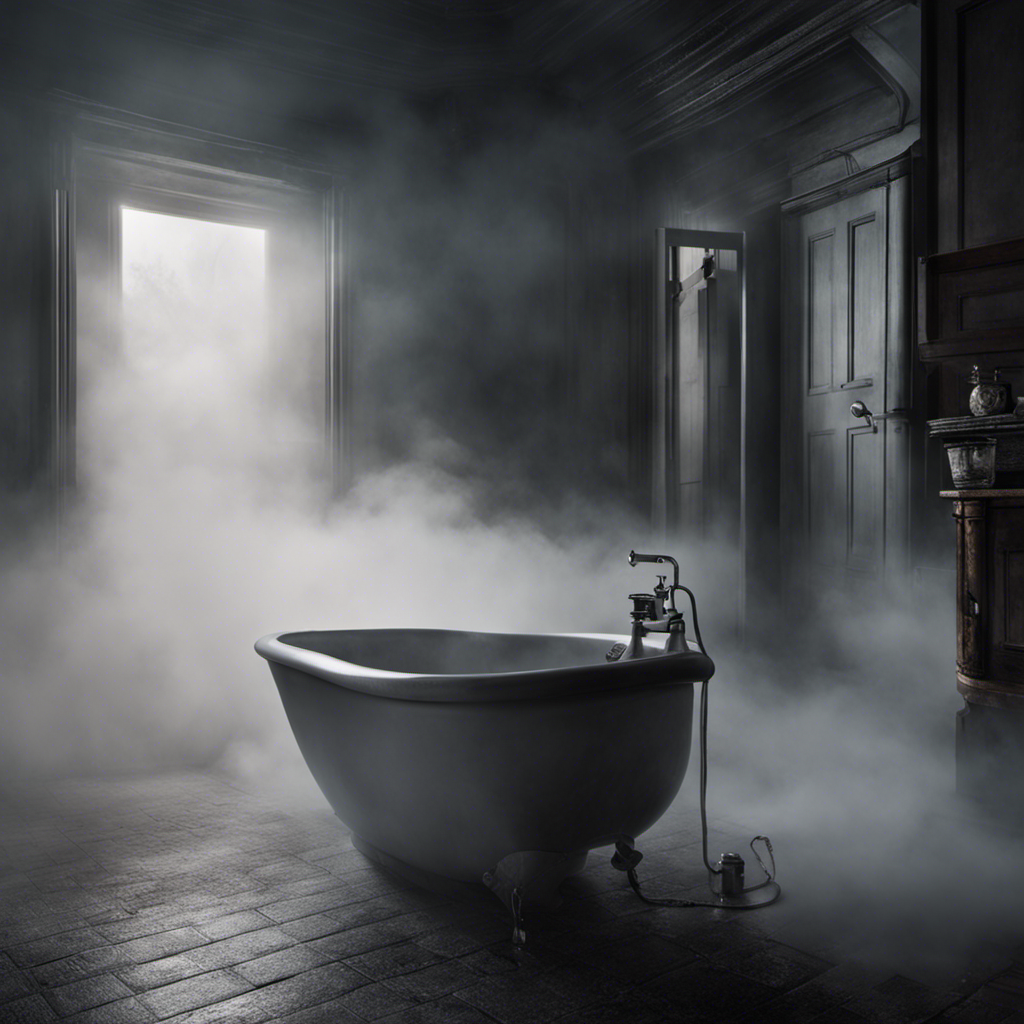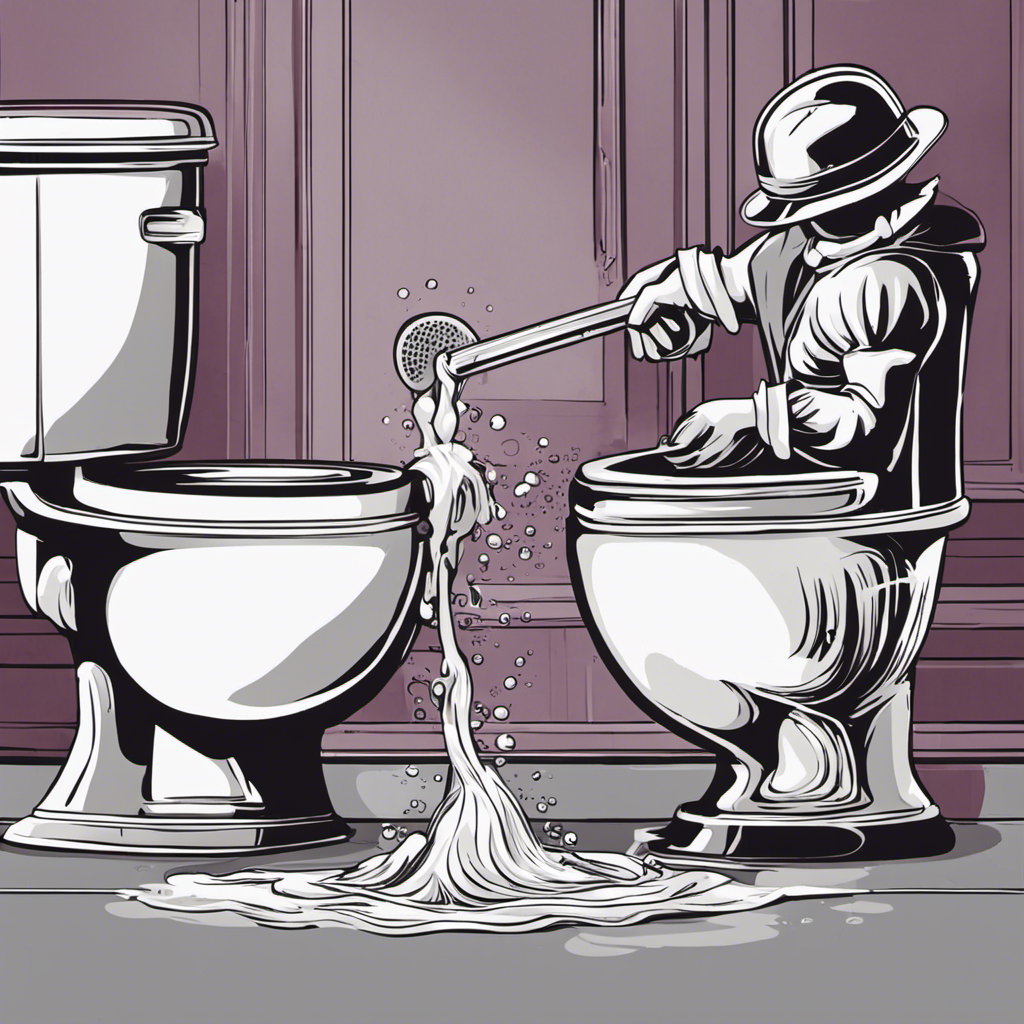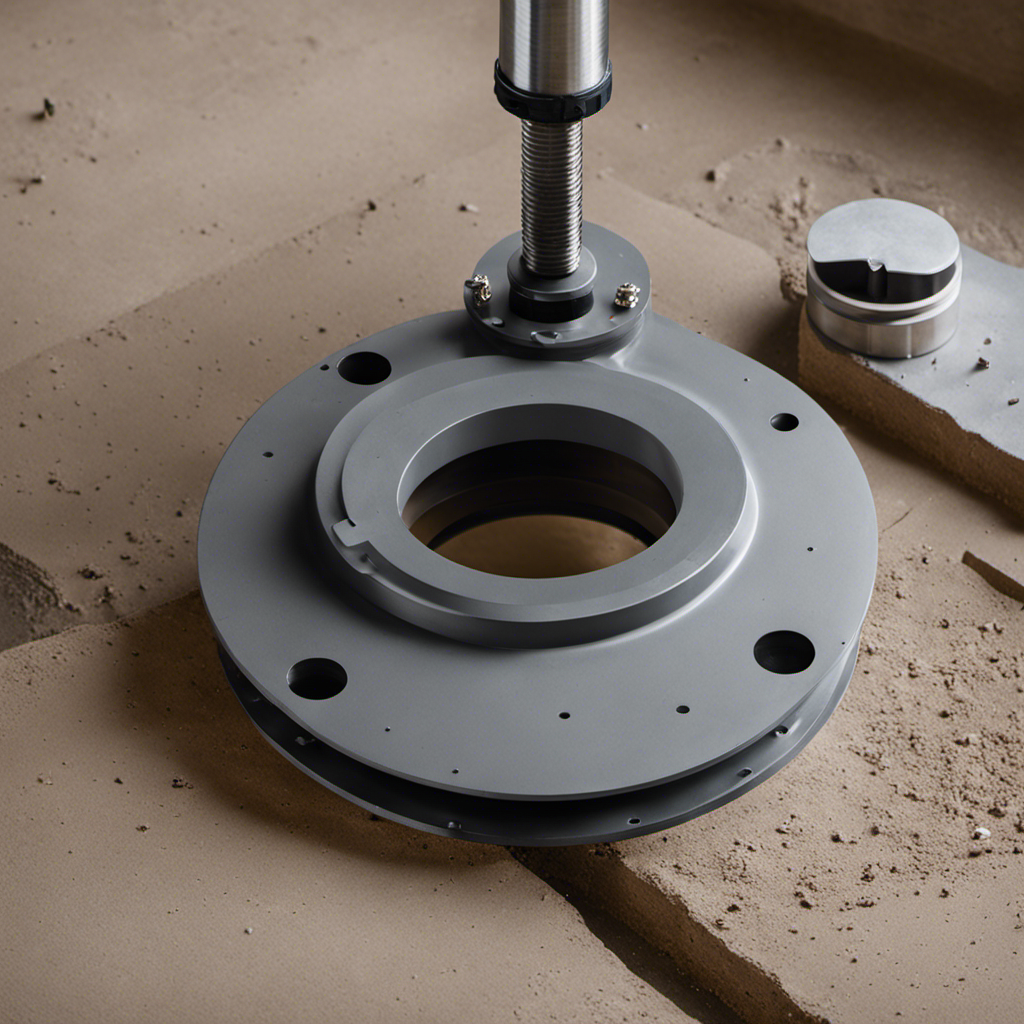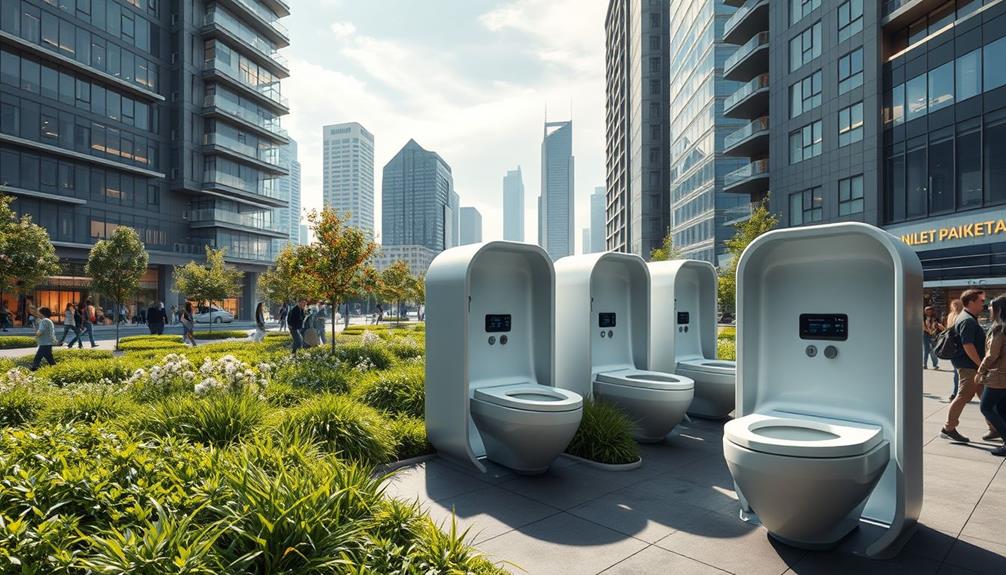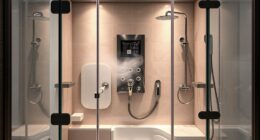Have you ever been startled by a loud fog horn noise when flushing your toilet? It’s a jarring experience that can leave you wondering what’s causing this strange phenomenon in your plumbing system.
In this article, I’ll delve into the common causes of this fog horn noise, provide an understanding of how your plumbing system works, and offer troubleshooting tips to fix the issue.
So, let’s get to the bottom of this unsettling noise and find a solution together.
Key Takeaways
- Water hammer and faulty fill valves or float valves are common causes of fog horn noise when flushing a toilet.
- Understanding the plumbing system and regularly checking for leaks, clogged drains, and worn-out washers or valves can help identify potential issues.
- Troubleshooting the fog horn noise involves checking water pressure, inspecting valves and pipes, testing the toilet fill valve, and installing water hammer arrestors or adjusting the water pressure regulator.
- To fix the fog horn noise, adjusting the water pressure, installing a pressure-reducing valve, insulating pipes, and soundproofing the bathroom with acoustic panels or curtains can be effective solutions.
Common Causes of Fog Horn Noise
If you’re hearing a fog horn noise when you flush the toilet, it could be caused by a few common issues.
One of the main causes of this noise is water hammer. Water hammer occurs when the flow of water is suddenly stopped or redirected, causing a pressure wave that creates a loud banging noise. This can happen when a valve closes too quickly or when there is a blockage in the plumbing system.
Another possible cause of the fog horn noise is a faulty fill valve or float valve. These valves control the water level in the toilet tank, and if they are not functioning properly, they can create a loud noise when the toilet is flushed.
It is important to address these issues as the constant disruption to sleep caused by the fog horn noise can have a significant impact on sleep quality.
Understanding the Plumbing System
To understand the plumbing system, you should be aware of the various sounds that can occur when you use different fixtures in your home. These sounds can often indicate potential issues that require attention.
Here are some plumbing maintenance tips and DIY plumbing repairs that can help you better understand and maintain your plumbing system:
- Regularly check for leaks in faucets, toilets, and pipes.
- Clean out clogged drains using natural remedies or a drain auger.
- Inspect and replace worn-out washers or valves in faucets to prevent drips and leaks.
- Learn how to shut off the main water supply and familiarize yourself with the location of shut-off valves for individual fixtures.
Troubleshooting the Fog Horn Noise
When you hear a fog horn-like noise coming from your plumbing, it may be a sign of a problem with the water pressure. Troubleshooting this issue requires a systematic approach to identify the root cause and implement appropriate solutions. Here are some techniques and strategies to address the fog horn noise and reduce it effectively.
| Troubleshooting Techniques | Noise Reduction Strategies | Common Causes |
|---|---|---|
| Check water pressure | Install water hammer arrestors | High water pressure |
| Inspect valves and pipes | Adjust water pressure regulator | Loose or faulty valves |
| Test toilet fill valve | Install anti-siphon devices | Water flow restrictions |
Ways to Fix the Fog Horn Noise
One way you can fix the fog horn-like noise in your plumbing is by checking the water pressure. High water pressure can cause vibrations in the pipes, leading to the loud noise. Here are some techniques to fix the issue:
-
Adjust the water pressure regulator: Locate the regulator and use a wrench to turn the adjustment screw clockwise to decrease the pressure.
-
Install a pressure-reducing valve: This device can be installed near the main water supply to regulate the water pressure and prevent excessive noise.
-
Insulate the pipes: Adding insulation to the pipes can help reduce the noise by absorbing the vibrations.
-
Soundproof the bathroom: Use materials like acoustic panels or soundproof curtains to minimize the noise transmission from the toilet.
By following these techniques, you can effectively fix the fog horn noise and ensure a quieter plumbing system.
Remember to regularly maintain your toilet to avoid any future issues.
Preventive Measures to Avoid Fog Horn Noise
Make sure you regularly check and adjust the water pressure in your plumbing system to prevent any excessive vibrations and loud noises. Proper water pressure control is essential in avoiding leaks and minimizing the occurrence of fog horn noise.
To begin, start by inspecting your pressure regulator and ensure it is functioning properly. If adjustments are needed, consult a professional to avoid any further issues.
Additionally, check for any obstructions or blockages in your plumbing system that could be causing the excessive pressure and resulting vibrations. Regularly maintaining and cleaning your pipes can help prevent these problems.
Lastly, consider installing water hammer arrestors to absorb the sudden changes in water pressure and prevent the loud noises associated with it.
Seeking Professional Help for Persistent Fog Horn Noise
In this discussion, I’ll be focusing on effective noise reduction methods and the importance of timely action in addressing persistent fog horn noise.
When it comes to noise reduction, it’s crucial to employ methods that are proven to be effective and efficient.
Additionally, taking timely action is essential to prevent further disturbances and ensure a peaceful environment.
Effective Noise Reduction Methods
To effectively reduce noise, you can try installing soundproof curtains in your bathroom. These curtains are designed to absorb sound waves and prevent them from entering or leaving a space. They are made with thick, dense materials that have sound-blocking properties. Soundproof curtains can be easily installed on your bathroom windows or doors, providing an effective barrier against noise.
Here are four soundproofing techniques and acoustic insulation solutions that you can consider:
- Use acoustic panels on the walls to absorb sound.
- Install weatherstripping around doors and windows to reduce sound transmission.
- Apply soundproofing caulk to seal gaps and cracks in the walls.
- Hang acoustic foam or soundproofing wallpaper to reduce sound reflection.
Importance of Timely Action
Taking prompt action is crucial in minimizing the impact of noise disturbances in your bathroom. Delayed action can have serious consequences on plumbing issues and ignoring the fog horn noise in toilets can lead to further damage.
When the toilet produces a loud, fog horn-like noise, it indicates a problem with the fill valve or the flush valve. Ignoring this noise can result in water wastage, increased water bills, and potential leaks. Additionally, the incessant noise can be disruptive and annoying, affecting your overall bathroom experience.
By addressing the issue promptly, you can prevent further damage to the plumbing system, save water, and maintain a peaceful environment in your bathroom.
Don’t underestimate the importance of taking immediate action to resolve these noise disturbances and protect your bathroom from potential plumbing issues.
Conclusion
In conclusion, fog horn noise when flushing a toilet can be caused by various factors such as water pressure issues, faulty fill valves, or improper venting. Troubleshooting the problem involves understanding the plumbing system and identifying the specific cause.
Fixing the fog horn noise can be done through methods like adjusting the water pressure, replacing faulty components, or improving the venting system. It is important to take preventive measures such as regular maintenance and inspections to avoid future occurrences of fog horn noise. Seeking professional help may be necessary for persistent or complex cases.
For example, in a case study, a residential building experienced consistent fog horn noise due to a partially blocked vent pipe, which was resolved by a professional plumber through thorough cleaning and unclogging.
